10. The Shining (1980)
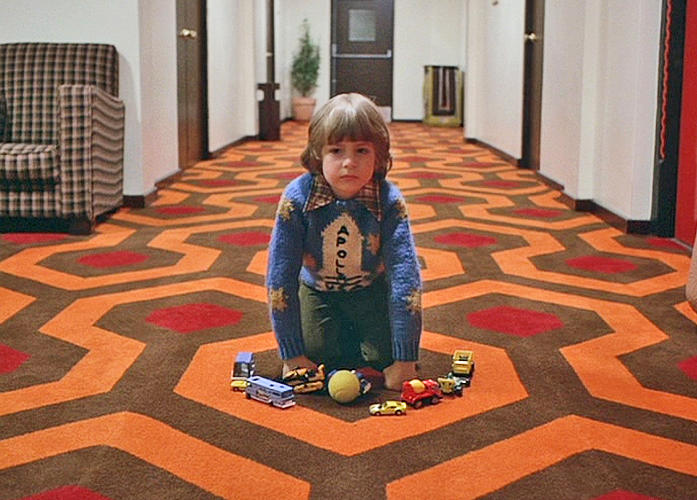
Technically marvellous with some eerie and iconic set pieces, Stanley Kubrick’s The Shining is revered as an effective blend of arthouse and horror. Jack Nicholson delivers an out there and way way over-the-top performance as writer’s block-afflicted headcase Jack Torrance, caretaker for the season at the remote Overlook Hotel.
Kubrick arguably overlooked all that made Stephen King’s early masterpiece compelling in exchange for an emphasis on unnerving arrangements and inconsistently upsetting continuity.
Viewed today I tend to side with many of the initial critics, who were none too impressed with the film. “[Kubrick’s] imagery—with its compulsive symmetry and brightness—is too banal to sustain interest, while the incredibly slack narrative line forestalls suspense,” was perhaps a little harsh coming from Chicago Reader scribe Dave Kehr, and the Razzies that year also saw fit to nominate The Shining for both Worst Director and Worst Actress.
But, for all its lapses––and I hate to be “that guy” but I much prefer the novel, filled to brim with suspense, compelling characters, and real danger, to the posturing and predictable trope-addled film––the axe-wielding, ad-libbing “Heeeeere’s Johnny!” has a maniacal charm, and Krzysztof Penderecki’s soundtrack manufactures the major scares.
Worth watching and debating with your friends whether it’s as great as they say. Also worth seeing how many people laugh at that last jump cut, certainly meant to shock but leaving most audiences I’ve seen the film with, laughing or, like Jack, cold.
9. Tenebrae (1982)
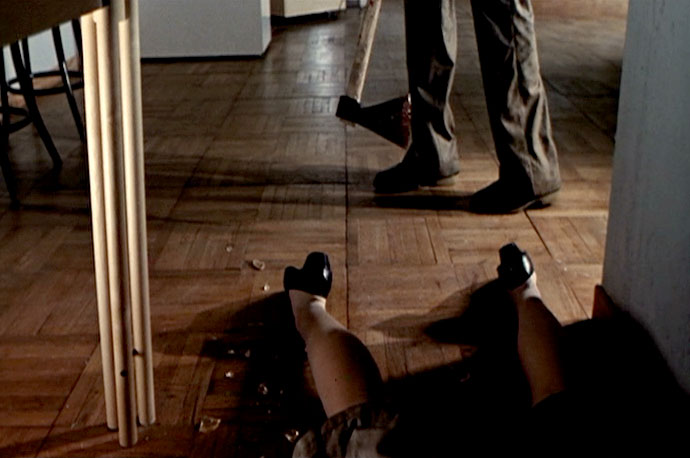
At the intersection of Euro-horror, high art, and psychosexual trash is Dario Argento’s singular, startling and perhaps most visceral film, Tenebrae. Vying for audience favor is one of German prog rock legends, Goblin, and their wildest and most pulse-pounding soundtracks ever, along with all the Argento requisites; dazzling damsels in distress, grisly psycho killers, labyrinthine plot twists, elements of the supernatural, and nasty knee-jerk shock maneuvering.
Tony Franciosa is Peter Neal, an adored American novelist whose body of work is known for it’s graphic violence and depravity. While Peter tours his most recent work, “Tenebre” on a signing tour in Italy, a rash of violent crimes—frequently involving straight-razors—that appear to be inspired by his best-seller, plagues the country.
The result is a reverence to Hitchcock, Argento’s own, earlier canon, and frequent challenges for the audience to puzzle out the identity of the killer. It’s a compact, tightly structured, hyper-stylized rollercoaster ride, and a jewel of giallo cinema.
8. Fright Night (1985)
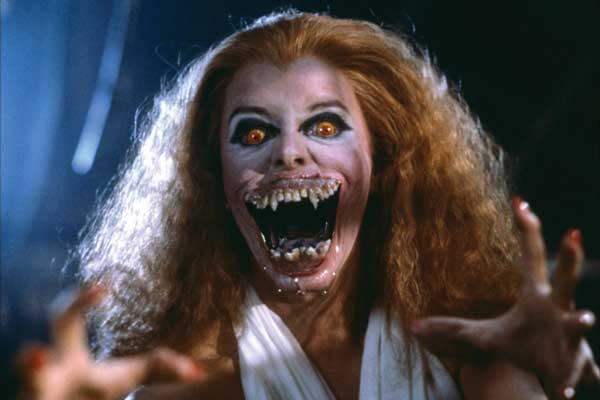
Easily one of the best horror comedies of the 1980s, Fright Night is certainly Tom Holland’s (Child’s Play, Thinner) finest fiction. The set up is classic: slacker teenager Charlie Brewster (William Ragsdale), a horror buff, has a creepy new neighbour, Jerry Dandridge (Chris Sarandon).
Charlie spies on Jerry, who’s nocturnal activity does mark him as creepy, and witnesses, or thinks he does at any rate, Jerry vamping out on an unsuspecting babe. As Charlie tries to convince others of what went down next door, the plot thickens, the gags escalate, laughs and scares pile up, and it’s all done with a surprising amount of savoir-faire and festivity.
Roddy McDowall’s turn as late night TV host and fading horror movie star, Peter Vincent, “the Great Vampire Killer” all but steals the show. This vampiric riff on Rear Window is highly recommended.
7. An American Werewolf in London (1981)
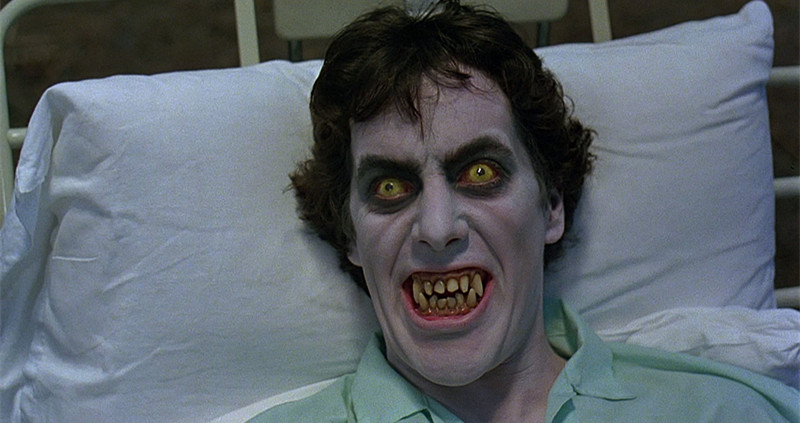
With undeniable and enviable skill, writer/director John Landis’ (responsible for Michael Jackson’s groundbreaking Thriller video) alternately frightening/funny film, An American Werewolf in London has withstood the passing decades because of its genius balance of horror, dark comedy, and drama.
You can’t help but obviously root for David Kessler (David Naughton), such a nice mannered young lad, but then again, after an unfortunate hike over the moonlit moors of Scotland, he keeps transforming into a genuinely terrifying werewolf and tearing people apart . As an original bonus, for his victims their torture goes on, cursed to roam and rot until Kessler himself snuffs it.
It’s still hard to believe the ahead of its time gruesome effects by Rick Baker (including the, we’re going to say, best werewolf transformation sequence of all time) were accomplished in 1981.
Aside from bending genre rules along to a perfect soundtrack, An American Werewolf in London provides an added perk/peril; you’ll never comfortably walk through a subway station ever again.
6. The Lost Boys (1987)
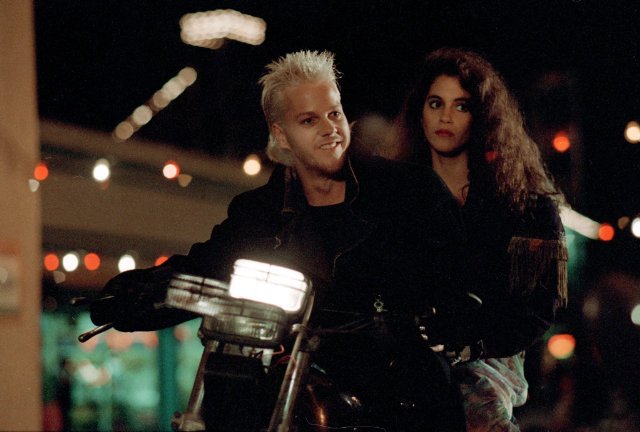
“One thing about living in Santa Carla I never could stomach,” quips Grandpa (Barnard Hughes) to his beleaguered and bleary family, “all the damn vampires.” It’s fair to say that Joel Schumacher’s directing career may have peaked early with his teen horror comedy tour de force The Lost Boys, and so be it.
A staple of 1980s American pop cinema, The Lost Boys has it all: impeccable production design, a great script that blends laughs with scares, sterling direction, and a winning cast.
When divorcee Lucy Emerson (Dianne Wiest) moves to a small town in northern California with her teenage sons Michael (Jason Patric) and Sam (Corey Haim) the stage is set when angsty Michael meets a dreamy hippie babe named Star (Jami Gertz). Star rolls with a gang of free spirited men, the titular “Lost Boys”, led by David (Kiefer Sutherland, in an iconic turn), who, spoiler alert, are a bunch of vampires.
Add the vampire-obsessed comic book dorks the Frog brothers into the mix (Corey Feldman and Jamison Newlander) and you get one of the most memorable, epochal, and enduring vampire films of the 1980s. Not only does the film gleefully reimagine many of the genre conceits, it reshapes them into a more palatable but no less amusing amalgam of dread and drollery.
5. Possession (1981)
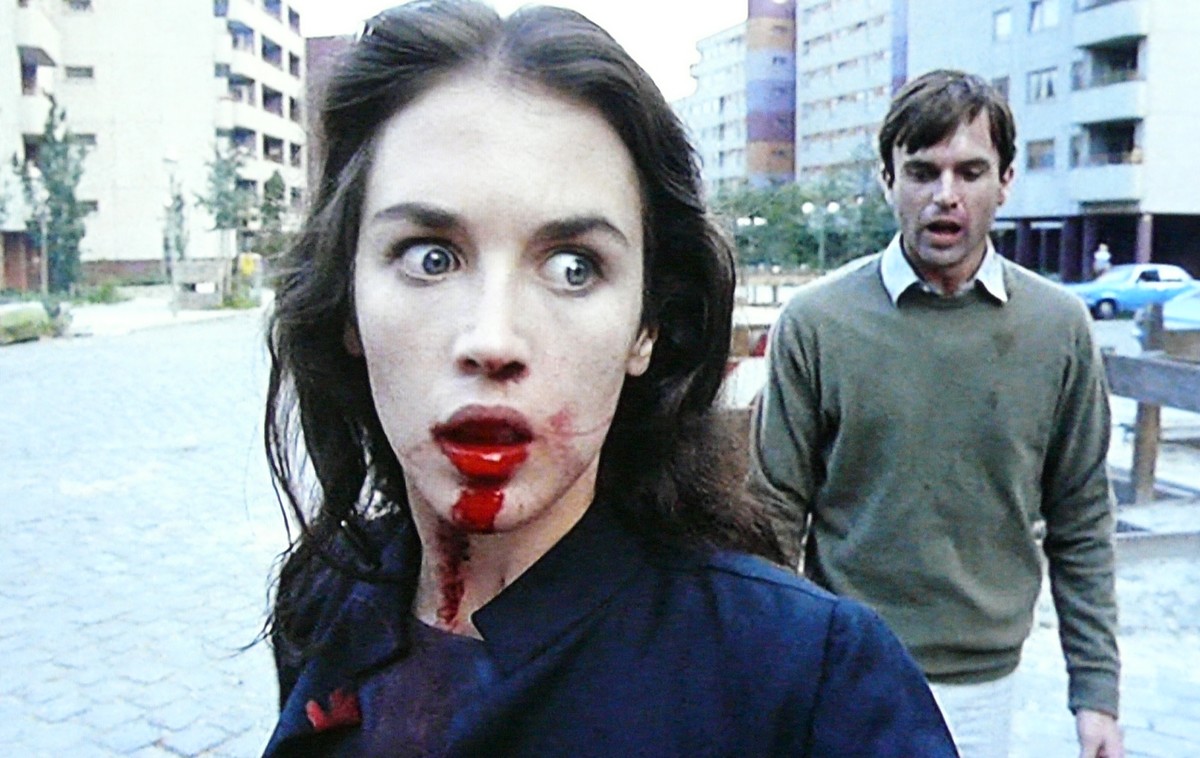
Andrzej Zulawski’s Possession is, on the surface, a straight-up horror film about a married couple, Mark and Anna (Sam Neill and Isabelle Adjani), in the throes of a sticky divorce.
As Anna’s behaviour degenerates into wildly erratic tantrums and manic, compulsive behaviour, Mark meets another woman, Helen (also played by Adjani), a dead ringer for Anna except for her startling green eyes and halcyon, harmonious presence. What could possibly be wrong, hmm?
As Zulawski’s fright fest unfurls, the situations escalate, often disturbingly, and with many shocks and violent prods. Occult elements appear, deepening and darkening the tale, and Adjani’s performance is equal parts alarming and impressive—it may be her finest role, up there with her titular turn in François Truffaut’s The Story of Adele H.—making for a psychological charade that is impossible to predict, vivid, rich, nerve-rattling in all the right ways, and one shocker of an ending that may take the viewer some time to recover from.
4. The Fly (1986)
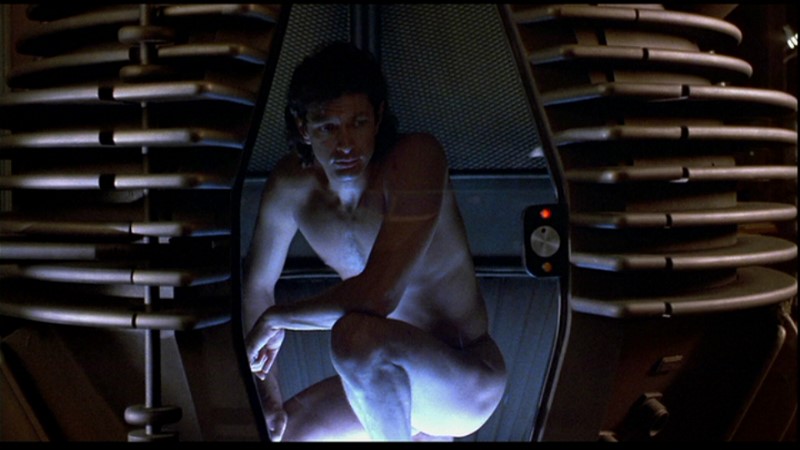
Throughout the 1980s David Cronenberg excelled at rendering atmospheric and immersive environments, overrun with body horror motifs and morally challenged characters, and The Fly exemplifies this.
On the surface The Fly can and should be seen as a remake of the 1958 sci-fi classic, now pure horror, in a visceral fright feast with the urge to regurge. Jeff Goldblum is mensch genetic scientist Seth Brundle, accidentally fused with a house fly via his revolutionary teleportation device. His lover, Veronica Quaife (Geena Davis), is an award-winning journalist, who will try to save him.
Veronica and Seth’s love story is intensely moving, clearly displaying Cronenberg’s maturation as a storyteller, and the underlying AIDS-era connotations add extra heft to the ill-fated affair. The Fly functions well as a modern horror, it terrifies as a parable of loss of self and also the disintegration of delicate love. In so many ways The Fly soars.
3. The Thing (1982)
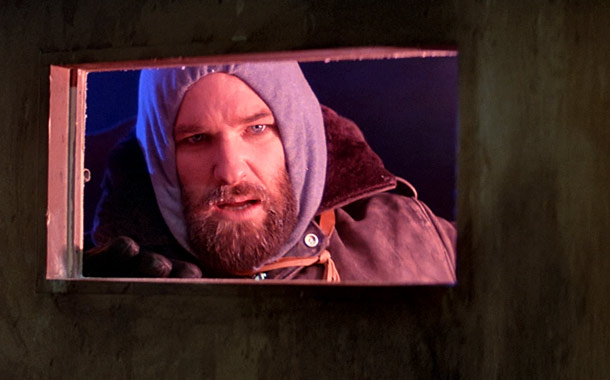
John Carpenter’s 1982 scare-athon, The Thing (itself a sorta remake of 1951’s The Thing from Another Planet and J.W. Campbell Jr.’s novella Who Goes There?) is gratuitous in its gore and relentless in its mounting mental fatigue.
The alien that stalks an Antarctic research station could be anyone due to it’s shape-shifting capabilities and insatiable bloodlust. This pageant in paranoia is led by Kurt Russell’s hard hearted hero and ace helicopter pilot PJ MacReady and a moody score by superstar composer Ennio Morricone.
Reviled upon its initial release by audiences and critics alike, Carpenter’s cross-pollination of Alien meets Invasion of the Body Snatchers was offset, as hindsight suggests, by Steven Spielberg’s feel-goodery populist picture, E.T. the Extra-Terrestrial, in theaters at the same time. But the years have been good to The Thing, it’s gore-effects still stand-up, it’s paranoid premise, perfection, and it works well as whodunnit, horror, and pitch-black comedy.
Carpenter fans have known all along that The Thing is marvellously and hideously impressive, that everyone else has finally caught on is, to the letter, a blessing in disguise for this far-out film.
2. The Vanishing (1988)
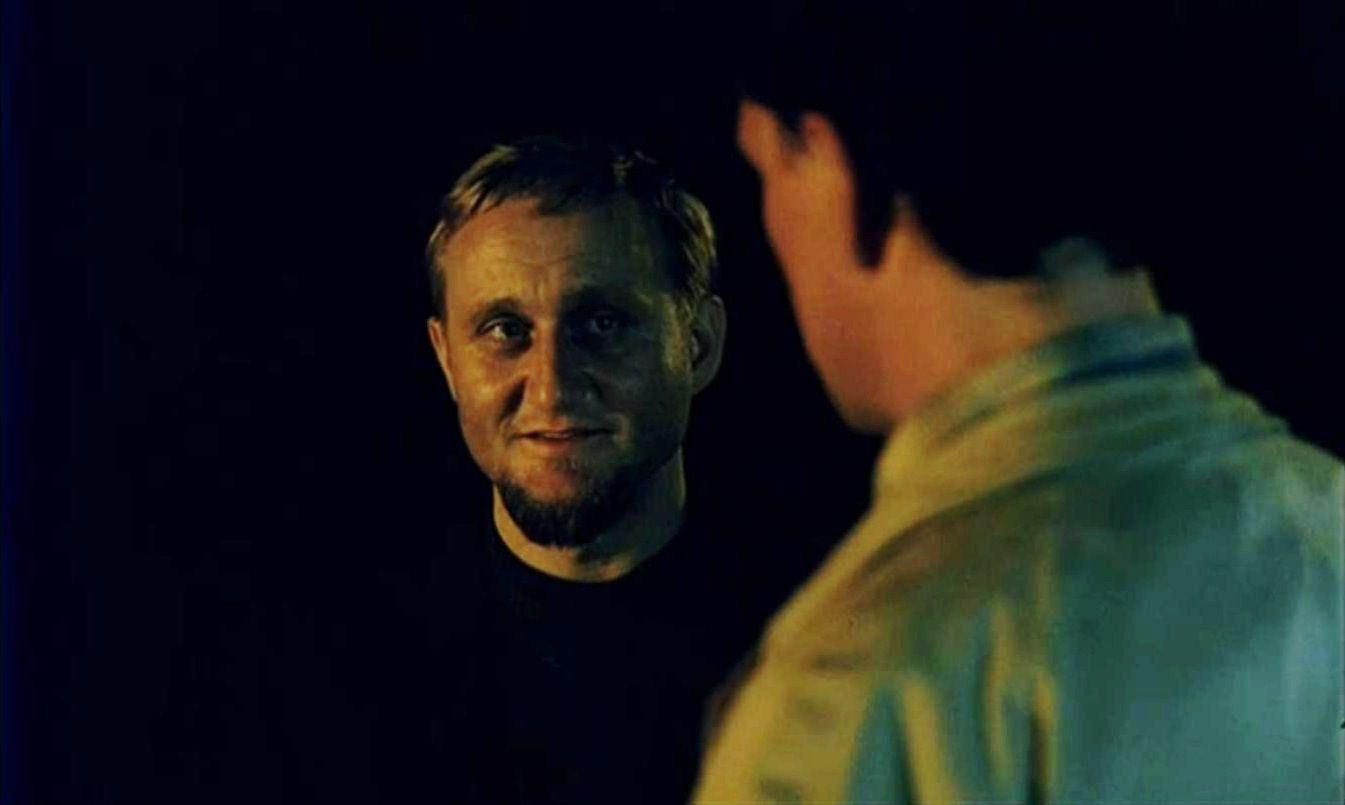
George Sluizer’s Dutch chiller, that he’d later remake for American audiences (with Sandra Bullock no less, and don’t bother watching it, it’s not good), is a tightly wound, harrowing ordeal that’s full of surprises.
Adapted from Tim Krabbé’s novella “The Golden Egg”, The Vanishing fixes its bleak gaze upon the disappearance of Saskia Wagter (Johanna ter Steege), a young woman last seen at a service station with her boyfriend, Rex Hofman (Gene Bervoets) while on vacay in France. Soon it becomes Rex’s obsession to discover the fate of Saskia, and as the years go by, his idée fixe becomes all consuming, and shockingly, his troubles have only begun.
The Vanishing’s uncompromising finale boosts it into the upper echelon of Hitchcockian horror to be sure, but the film as a whole also functions as a master class in unsettling moments and slowly ratcheting terror.
An intellectual thriller of this ilk is rare, that it conjures equal measures of cursory family life and detached doom with such shrewd elegance resulting in one of the most ferocious climaxes of any film ever buoys The Vanishing into the sinister celestial. So much so that Stanley Kubrick famously and enthusiastically said to Sluizer that he’d watched his film three times, adding it was “the most horrifying film I’ve ever seen.”
1. The Changeling (1980)
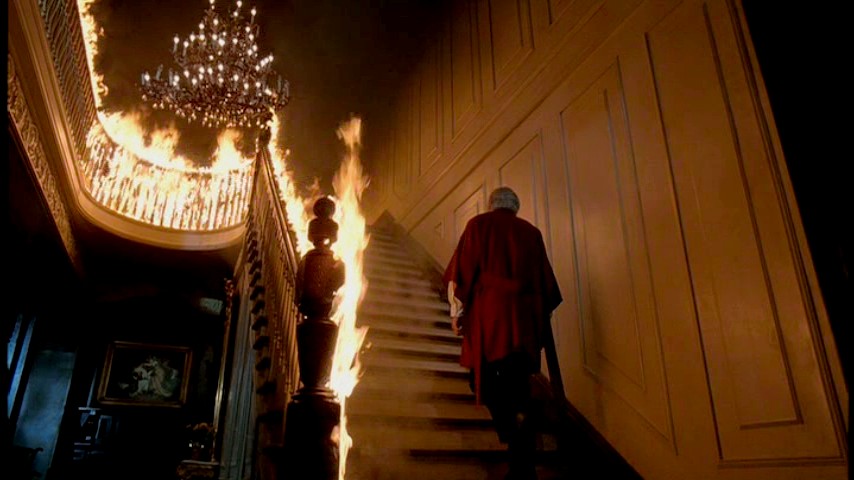
Peter Mendak (The Krays, Romeo is Bleeding) may not be thought of as a horror movie director but his haunted house ghost story from 1980, The Changeling, fully embraces the Hitchcock tradition. It’s a dark-hearted, nail-biting mystery moored by George C.
Scott’s spellbinding performance as John Russell, a brilliant composer grieving the loss of his family in a tragic road accident. Classic ghost story elements get redrawn in elegant fashion—bumps in the night, ghostly visages, clues to something reprehensible, even a shocking séance sequence—all creating an arresting sense of genuine dread and perplexity.
Assisted by the late, great cinematographer John Coquillion—the genius behind such ravishing pictures as Michael Reeves’ Witchfinder General and Sam Peckinpah’s Pat Garrett and Billy the Kid amongst others—The Changeling is a précis of classic horror concepts (and it certainly influenced every haunted house tale that followed). It’s an unsung and uncompromising classic worthy of our top spot.
Author Bio: Shane Scott-Travis is a film critic, screenwriter, comic book author/illustrator and cineaste. Currently residing in Vancouver, Canada, Shane can often be found at the cinema, the dog park, or off in a corner someplace, paraphrasing Groucho Marx. Follow Shane on Twitter @ShaneScottravis.